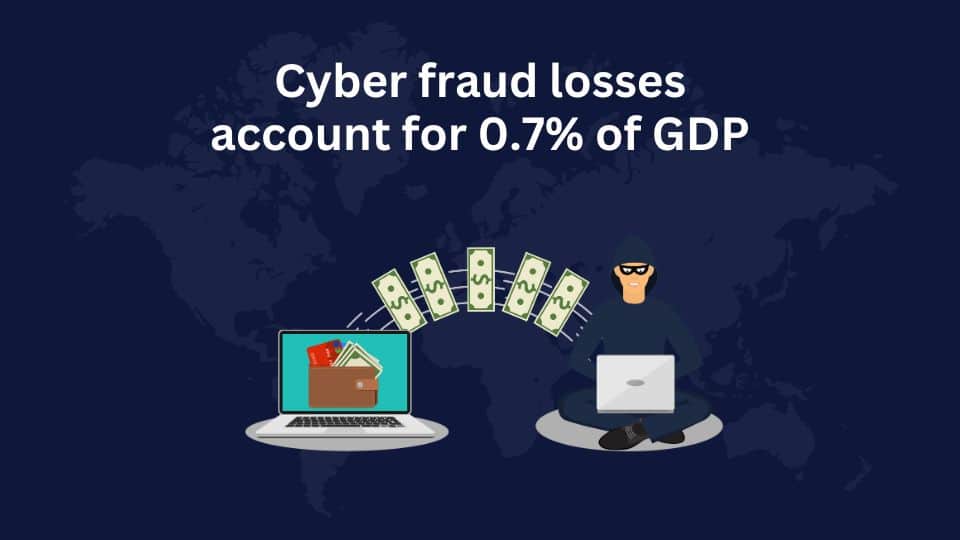
India is grappling with a cybersecurity crisis of unprecedented scale. A recent study by the Indian Cyber Crime Coordination Centre (I4C), under the Ministry of Home Affairs, predicts cyber fraud losses could exceed ₹1.2 lakh crore in the coming year, amounting to 0.7% of the nation’s GDP. With cyber scams growing more sophisticated and interconnected, urgent action is needed to curb these economic threats.
The Scale of Financial Fraud
In just the first half of 2024, ₹11,269 crore was lost to financial fraud, highlighting the alarming scale of the problem. These scams often involve mule bank accounts, used to facilitate illegal transactions and launder money. Most of the defrauded funds are routed offshore, with significant links to China, Cambodia, and Myanmar.
According to I4C’s data, 4,000 mule accounts are identified daily, yet the overall impact remains massive due to unreported or separately investigated cases.
Origins of Scams
Over 50% of cyber fraud cases reported in India trace back to China and Southeast Asian hubs like Cambodia and Myanmar. These regions host organized scam compounds resembling call centers, where fraudsters—sometimes Indian nationals—target victims using Indian phone numbers and sophisticated phishing techniques.
High-Tech Crime Tactics
From cryptocurrency laundering to AI misuse, cybercriminals employ advanced technologies to bypass detection. For instance, ₹5.5 crore in cryptocurrency was laundered through Indian accounts between March and May 2024 alone. International hotspots like Dubai, Hong Kong, Bangkok, and Russia also feature in fraudulent cash withdrawals using compromised Indian debit cards.
The Role of Banks and Regulatory Measures
Banks are pivotal in combating cybercrime, yet mule accounts often thrive due to inadequate monitoring. Unusually high-value transactions in accounts with low balances or from salaried individuals often go unnoticed.
Proposed Countermeasures
- Monitoring Transaction Patterns: Banks must flag sudden spikes in transaction volume or frequency, especially when linked to foreign IP addresses.
- Collaboration with RBI: The Ministry of Home Affairs is coordinating with the Reserve Bank of India and the Finance Ministry to establish stricter oversight on mule accounts.
- Enhanced Security Systems: Financial institutions need to adopt AI-driven systems to detect anomalies, including multiple logins from a single IP or overseas access.
Implications for National Security
Cyber fraud isn’t just an economic issue; it has broader implications for national security, including terror financing and money laundering. Without immediate intervention, these scams could further destabilize the financial ecosystem.
How You Can Stay Safe
As individuals and businesses, taking proactive steps to secure online transactions is vital:
- Verify Unknown Links: Avoid clicking on links from untrusted sources.
- Use Strong Passwords: Update passwords regularly and enable two-factor authentication.
- Report Suspicious Activity: Use the government’s cybercrime portal or helpline (1930) to report fraud promptly.
- Educate Employees: Businesses must train employees to recognize phishing attempts and other cyber threats.
Conclusion
Cyber fraud poses a grave threat to India’s economy and global standing. As technology evolves, so do the tactics of fraudsters. However, by fostering robust regulatory frameworks, leveraging AI-driven monitoring tools, and increasing public awareness, India can combat this menace effectively.
Protect your assets, secure your future—because in the digital age, vigilance is your strongest defence.